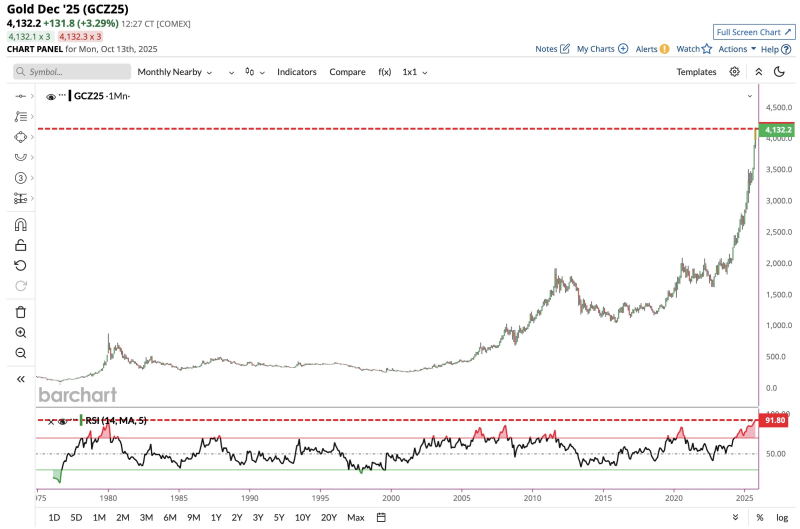Gold futures have rocketed into uncharted territory, with December 2025 contracts hitting $4,132 per ounce while the monthly RSI climbed to 91.8—the highest reading in the metal's trading history. This explosive move has left both investors and analysts questioning whether we're witnessing a new paradigm or an unsustainable bubble.
The precious metal has become the market's most talked-about asset, combining safe-haven appeal with momentum that's breaking every technical gauge. According to market data from Barchart, gold's relative strength index has entered territory never seen before, raising questions about what comes next.
Chart Analysis

The technical picture tells a dramatic story. The December contract blew past the psychological $4,000 level and kept climbing to $4,132. The RSI reading of 91.8 sits well above the traditional 70 "overbought" threshold—in fact, it's the most extreme reading on record. When compared to previous peaks in 1980 and 2011, this rally stands in a class of its own. If buyers maintain control above $4,100, the next target could be the $4,500 zone.
Safe-haven flows continue driving demand as geopolitical tensions and inflation fears persist globally. Central banks, particularly in China and India, are aggressively building reserves. Meanwhile, a weaker U.S. dollar makes gold more attractive to international buyers, and momentum-driven algorithmic trading has amplified the trend, creating a self-reinforcing rally.
What's Next?
While long-term fundamentals look solid, an RSI at 91.8 is flashing warning signs. Markets this overheated typically see corrections or consolidation. That said, with central banks still buying and macro uncertainty intact, any pullbacks might be brief—potentially offering fresh entry points for long-term bulls.
Gold's historic breakout has reshaped the market landscape, making it the most closely watched asset heading into 2026. Whether this represents a sustainable uptrend or the early stages of a speculative blowoff remains the key question for traders and investors.
 Peter Smith
Peter Smith

 Peter Smith
Peter Smith


